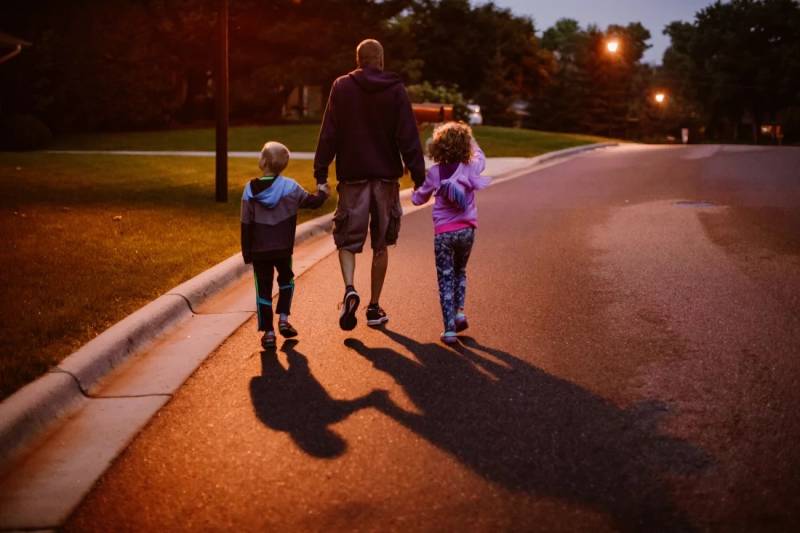“Italians have been doing it, and Europeans have been doing it forever. My grandparents did it,” she says.
Some people used to refer to these walks as constitutionals or strolls undertaken for your health.
TV may be one reason why the habit fell out of favor, but the idea has caught on again recently, thanks to viral TikTok videos extolling the virtues of a post-meal walk — sometimes called, ahem, “fart walks” because they can relieve gas! Experts say this is one health hack that social media gets right.
“Sustained walking at any time of day is beneficial. You get more bang for the buck if you walk after meals,” DiPietro says.
Why? For starters, walking or other physical activity will jumpstart digestion, so your meal goes down easier, says Dr. Chris Damman, a gastroenterologist and professor at the University of Washington who studies the intersection of the microbiome and metabolic disease.
“It actually has pretty important benefits for your well-being in your belly, getting things moving, so to speak, and may be also beneficial for clearing the air, if you know what I mean,” Damman says.
Faster digestion may help get more fiber and other undigested nutrients to the lower part of the gut, providing a feast for the microbes that live there, Damman says. And if you’re feeding them fiber-rich foods, these microbes will, in turn, produce lots of molecules that play an important role in keeping our brains, immune systems and metabolisms healthy.
Walking also plays a big role in helping to regulate blood sugar levels after eating. That’s because as food is digested, it gets broken down into different parts, including the sugar glucose, one of the body’s main sources of energy. That sugar will then flood the bloodstream. A post-meal walk can blunt that spike, he says.
“One of the reasons walking is beneficial is when we move our muscles — and that’s both our heart and the muscles in our legs and our arms — they become sponges for the blood glucose that our gut is absorbing into the bloodstream,” Damman says. “And so it basically just pulls all that glucose out of the blood and into the muscles, where it’s being used immediately for propelling us forward.”
Normally, the body produces the hormone insulin to clear glucose out of the blood and into nearby cells. But muscle contractions through walking can also accomplish this — even without the presence of insulin.
That means less stress on your pancreas because it doesn’t have to produce as much insulin after a meal. And that’s important because “over time, high loads on the pancreas can tax it and even lead to pre-diabetes or diabetes,” Damman says.
You don’t have to walk long or intensely to see these benefits. For instance, DiPietro co-authored one study that found taking a 15-minute walk at a moderate pace after a meal improved blood sugar control even hours later. Other research has found that as little as 2 to 5 minutes of post-meal walking can help lower blood sugar, though longer is better.

